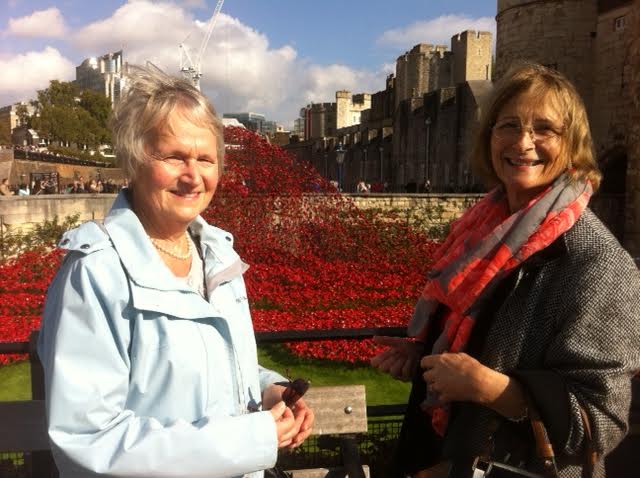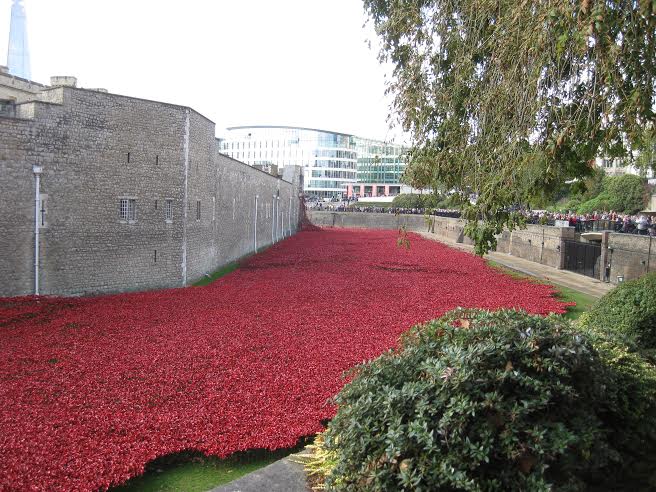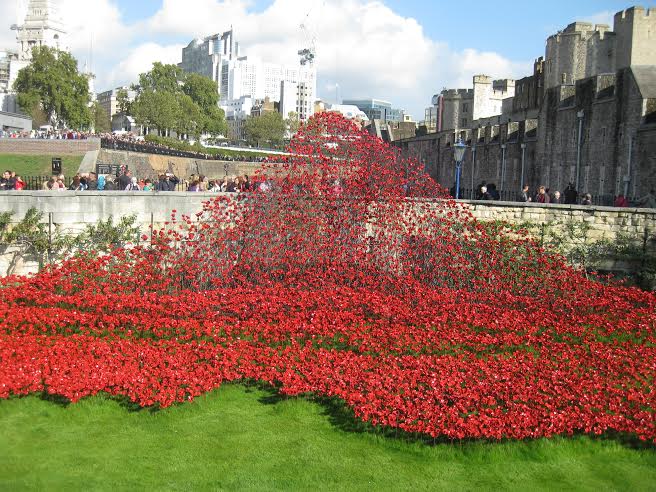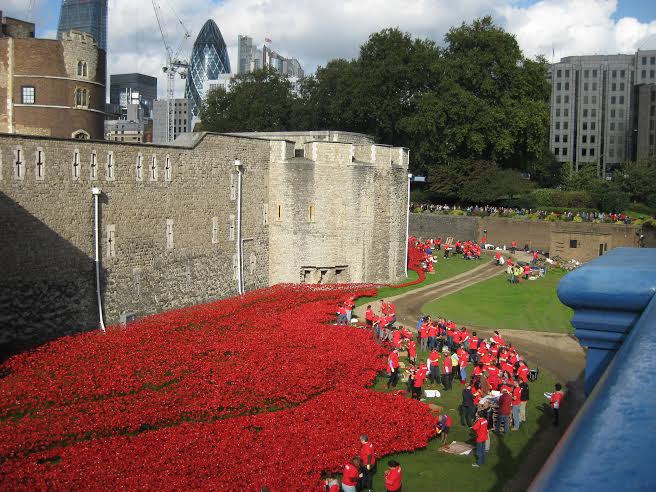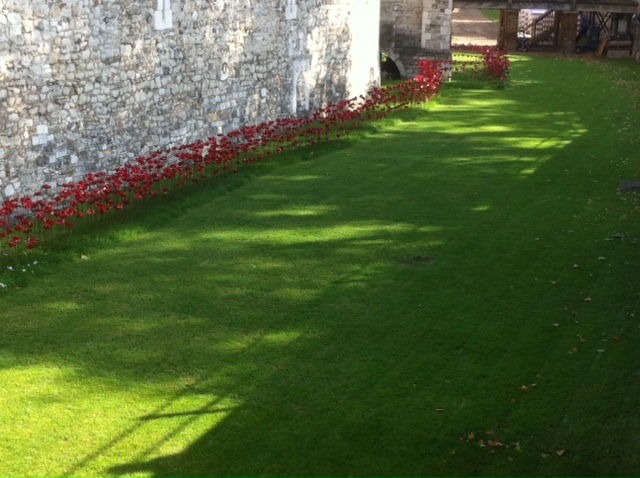Yesterday, on a brilliant clear October morning two of the granny administrators of Words for the Wounded, Jan Speedie and Margaret Graham, arrived at the Tower of London to view the art installation Blood Swept Lands and Seas of Red.
The art installation commemorates Britain’s involvement in the First World War, a war to which so many marched in the early days, certain that it would ‘be over by Christmas’. It was not to be, of course. The war ended four years later at 11.00 am on the 11 day of the 11 month of 1918.
One of those who went early to war, was a Derbyshire man who died in Flanders. He wrote in his will, knowing that everyone was dead and he was surrounded by blood, The Blood Swept lands and seas of red, where angels fear to tread. It is these words that inspired ceramic artist Paul Cummins’s design.
In those trenches, classes mixed for the first time, barriers were broken, lives were destroyed. ((888,246 British and Colonial dead) many many others were injured, mentally and physically . It was a defining moment in our history, if you could call such relentless effort and sacrifice a moment.
The setting was designed by stage designer Tom Piper. In total, 888,246 ceramic poppies will progressively fill the iconic Tower’s moat over the summer. One for every single man who was lost. Volunteers fix the stems and plant out the poppies, for sale for £25. In due course, the poppies will be packaged and posted to the purchasers, again by the volunteers. Bravo the volunteers.
By yesterday the tide of poppies had extended in some areas to the edge of the moat, and in others, were lapping towards the walls, but there is room and time for more, just as there was, sadly, time for more in that First World War.
It is a heart stopping vision, one that promotes a moment of deep reflection, of commemoration, and for the grannies a determination to continue with our voluntary work – raising funds for the recovery of injured troops, so on with the mail shots for our fundraising writing competitions opening on 11th November.
I believe the last poppy will be planted on the cusp of 11 November.
The Tower of London website says ‘We are hoping to sell all of the poppies that make up the installation and, in doing so, raise millions of pounds which will be shared equally amongst six service charities.’
I would love to know exactly how much is distributed as our servicemen, and ex-servicemen are still sorely in need.
Pictures courtesy of Susan Atkins and Margaret Graham
.

